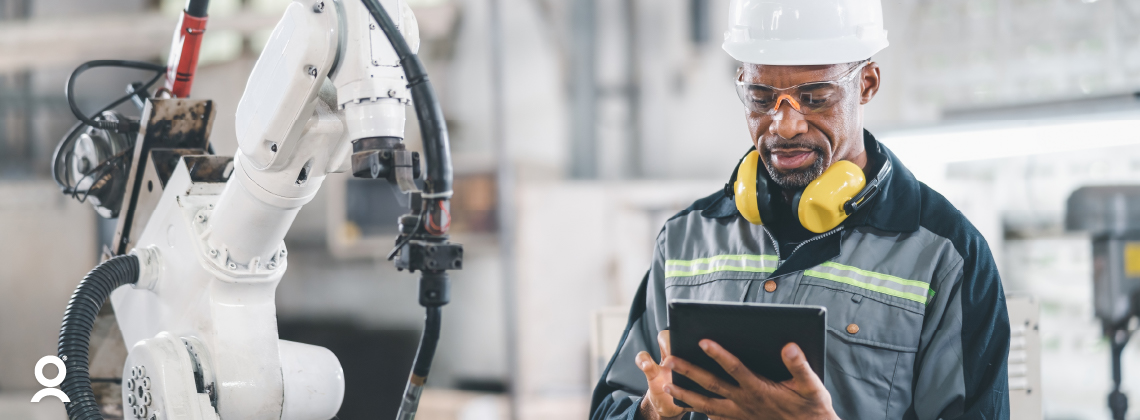Overcoming Four Major Manufacturing Workforce Challenges in 2023

The manufacturing industry is currently undergoing a massive shift as it responds to rapidly evolving customer demands, technological advancements, supply chain disruptions, and ongoing labor shortages. In order to navigate these changes and remain competitive, manufacturers are increasingly turning to “smart manufacturing” solutions that leverage intelligent automation and cloud-based modern workforce management practices to optimize operations and enhance the employee experience.
To shed more light on this topic, WorkForce Software brought together Todd Asevedo, SAP Global VP Payroll & Time, HXM Move, Public Sector CoE/GTM, and Jason Patterson, WorkForce Software VP of Global Solution Consulting, to participate in a discussion on the challenges facing the manufacturing industry in 2023, the solutions being implemented to address those challenges, and the impact of prioritizing the employee experience on manufacturing organizations.
To discover future technology trends and to understand the effect prioritizing the employee experience has on manufacturing organizations, watch our on-demand webinar “Solving the Top Four Manufacturing Workforce Challenges of 2023”.
According to both experts, four workforce management challenges facing the manufacturing industry in 2023 include:
- Effective Workforce Management – As the manufacturing industry becomes increasingly competitive, companies are struggling to attract and retain skilled workers, and the resulting shortage of qualified labor is impacting productivity and profitability.
- Technology Trends and Advancements – Technology is advancing at an unprecedented pace, and manufacturers are under pressure to keep up with the latest developments to remain competitive. This challenge is often exacerbated by the hefty cost of updating legacy systems and navigating IT and OT integrations.
- Increasing Complexity of Workforce Management – As manufacturers adopt new technology and adapt to new business models, the requirements of modern workforce management have also become more complex. This includes the need to manage a diverse and remote workforce, maintain compliance with new regulations, and ensure the accuracy of payroll and time management.
- Demand for Improved Employee Experience – As manufacturers continue to progress on their digital journey, employee experience becomes a key element to create visibility into the needs of the modern workforce while building better understanding and engagement between companies and their employees.
The best way to address these challenges is to leverage solutions that allow for comprehensive and modern workforce management that can improve the employee experience. Given the pace of modern technology and the new workforce generation, it is essential for companies to find a means to engage and communicate with their employees.
“For employees on the line, it’s just as important to know what they don’t need to see—that ‘administrivia,’ the things that will slow them down or make them go look for something when we can push something to them.”
Todd Asevado – Global VP Payroll & Time, HXM Move, SAP
Modern workforce management practices powered by smart technology tools make these four capabilities possible. Implementing solutions that enable interactions between employers and employees—in addition to empowering employees on their daily hourly decisions—moves companies leagues closer to becoming better organizations for their workforces and to achieving their business goals.
Asevedo and Patterson explained that prioritizing the employee experience will have a significant impact on manufacturing organizations. By offering a positive work culture and investing in employee development, companies can attract and retain top talent, reduce turnover, and increase productivity. Additionally, a positive work culture can help companies weather periods of disruption, such as supply chain disruptions or economic downturns.
We invite you to watch the full conversation on demand and learn how manufacturing organizations are leveraging modern workforce management practices and smart technology tools to transition into “smart manufacturing” companies.
Subscribe to The WorkForce Blog
Learn the art and science of maintaining productive, happy, engaged employees.
Discover More
Nucleus Insights from WorkForce Customers Research Note
Nucleus Research interviews WorkForce customers who validate why we’re ranked the #1 WFM enterprise vendor for 10 consecutive years.
5 Workforce Management Secrets to Thrive in 2021 and Beyond
Download this eBook to learn the 5 secrets that will help your organization shift from surviving to thriving now and in the future and learn how the right workforce management solution can empower your initiatives.
Streamlining Complex Workforce Compliance Requirements Boosts Productivity
Discover how workforce compliance software helps EMEA organisations navigate complex legislation, enhance compliance and boost operational efficiency.



